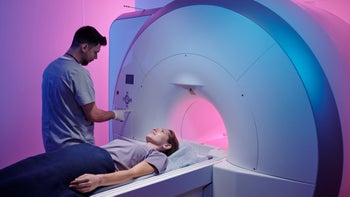
Are Symptoms and Signs the Same?
Key takeaways:
The words signs and symptoms are often used interchangeably, although they have distinct meanings.
Symptoms are feelings or sensations a person has, whereas signs are observable characteristics.
Your provider uses symptoms, signs, and testing to make a diagnosis.

If you have ever searched online for medical information, you have probably seen the terms signs and symptoms. Often, the two words are grouped together and are even used interchangeably. But are they the same thing? If not, what’s the difference?
Here we will explain the difference and provide examples of signs and symptoms so you know how to tell them apart.
What’s the difference between signs and symptoms?
Symptoms refer to the feelings and concerns that you feel. Symptoms can be perceived only by the person who is experiencing them. For instance, shortness of breath is a sensation that only the sufferer can feel. Symptoms may be nothing for you to worry about, or they may prompt your provider to order tests for investigation.
Search and compare options
In medical terminology, a sign refers to something others can observe or measure. As opposed to symptoms, which are subjective, signs are objective. Signs of an illness can be detected using various tools, such as a stethoscope, X-rays, and laboratory tests.
Both signs and symptoms are used to diagnose a disease or condition. Your provider will try to match your set of symptoms with the signs they discover through examination and testing.
For example, let’s take the case of the person with the symptom of shortness of breath. Their provider may listen to the person’s chest and hear wheezing. A breathing test (spirometry) may then show decreased airflow in the lungs. Wheezing on examination and evidence of poor airflow on spirometry are both signs of asthma. Thus, the symptom (shortness of breath) is matched with signs (wheezing and poor airflow) to diagnose asthma.
A common cold can also be defined in terms of its signs and symptoms. You may have symptoms of feeling feverish, fatigued, run down, and congested. On examination, your provider may measure your temperature and observe swelling of your nose. They may also order a nasal swab to see whether a respiratory virus may be causing your symptoms. This is another example of how both signs and symptoms are used together to diagnose a disease.
Trusting your gut: Hear first-hand stories of heart attack survivors who wish they had listened to their instincts that something was wrong.
Choosing a doctor: It can be difficult to know which type of doctor you may need to see. We take a closer look at what different doctors and medical specialists do.
Communicating is key: Talking to your doctor can be intimidating, but it’s essential to getting the best care possible. Learn some tips for talking to your healthcare team so you can make the most of your next appointment.
What are the different kinds of symptoms?
Symptoms may affect every organ system in your body. General (also known as constitutional) symptoms refer to those that affect a person’s general sense of well-being. Examples include feeling feverish, having body aches, and being fatigued. Other symptoms can be specific to the part of the body affected.
There are several different kinds of symptoms:
Acute symptoms come on quickly and go away on their own or after they are treated. For instance, cold symptoms go away on their own after a week or so.
Chronic symptoms refer to persistent complaints related to an illness that last for several months to years. For example, a person with heart disease may have chest pain and other symptoms for a long time.
Remitting symptoms are those that have improved or completely gone away. For example, if a person previously suffered from migraines and has not had one for a while, their headaches have gone into remission.
Relapsing symptoms are at times worse, especially after a period of remission. A common scenario is in people with an autoimmune disease such as lupus, who often experience periods of worsening symptoms or “flares.”
Relapsing and remitting diseases can start and stop with no clear rhyme or reason. Sometimes, they may follow specific patterns. In other cases, an injury, infection, or other factors may trigger relapse.
Some diseases are asymptomatic, meaning that they may not cause any symptoms at all. This is why regular health checkups are recommended — to look for any underlying health conditions that don’t cause symptoms.
What are the different kinds of signs?
Like symptoms, signs can vary according to which part of the body is affected. They can also affect the whole body, such as with fever and weight loss.
Read more like this
Explore these related articles, suggested for readers like you.
Diagnostic signs help your provider identify or diagnose a medical condition. For example, if your provider suspects that you have pneumonia, they may order a chest X-ray. White spots (infiltrates) on your chest X-ray would be a diagnostic sign.
In addition to diagnosis, signs can also help predict the course of an illness. For example, if cancer is found to have spread to other tissues, this is a sign of poor prognosis.
There are also some diseases and conditions that may not have any observable signs. Migraines, for example, cause many symptoms, like severe headache and vision changes. However, there are no physical signs, laboratory tests, or imaging studies that your provider can use to confirm the diagnosis. Migraines are thus diagnosed based on a person’s symptoms alone.
What are some examples of signs and symptoms?
Let’s look at a few common medical conditions to illustrate the difference between signs and symptoms.
| Medical condition | Symptom (subjective) | Sign (objective) |
|---|---|---|
| Eczema | Itching, sensitive skin, irritability, loss of sleep | Red, scaly, inflamed skin, oozing/crusting |
| Heart failure | Shortness of breath with exertion and lying down, palpitations, fatigue, weakness, cough | Swelling of the ankles, heart murmur, decreased ability of the heart to pump on ultrasound |
| Chronic obstructive pulmonary disease (COPD) | Shortness of breath, cough, fatigue, mucus production | Wheezing, poor airflow through the lungs on spirometry |
| Cataracts | Blurry vision, light sensitivity, decreased night vision | Cloudy lenses in the eyes |
| Gastroesophageal reflux disease (GERD) | Heartburn, abdominal pain | Inflammation of the esophagus on endoscopy |
| Hay fever | Sneezing, itching of the nose and eyes, sore throat | Swelling of the nose, sensitivity on allergy testing |
| Osteoarthritis | Joint pain and stiffness | Joint tenderness and swelling, narrowed space between the bones on X-ray of the joint |
The bottom line
Signs and symptoms are common medical terms but are frequently mixed up. Symptoms are subjective and can be perceived only by the person affected. Signs are objective findings that can be seen or measured. Both signs and symptoms of an underlying health condition are important in making a diagnosis.
Why trust our experts?


References
American Cancer Society. (2020). Understanding advanced and metastatic cancer.
American Lung Association. (n.d.). Shortness of breath.
American Lung Association. (2020). Spirometry.
Ginocchio, C. C., et al. (2011). Current best practices for respiratory virus testing. Journal of Clinical Microbiology.
Gong, H., Jr. (1990). Chapter 37 wheezing and asthma. Clinical Methods: The History, Physical, and Laboratory Examinations. 3rd edition.
RadiologyInfo.org. (2021). Pneumonia.



























